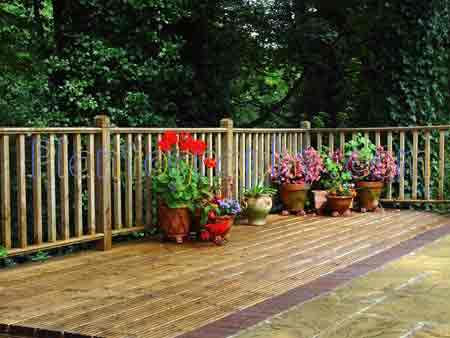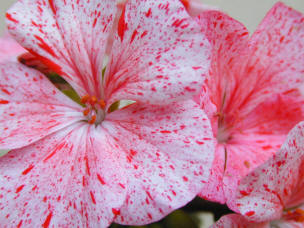Briza - The Quaking GrassBriza minor; Briza media
and Briza maxima
Briza ornamental grasses are noted for their pendant
flowerheads - and later, seedheads, that bob about in the
slightest of breezes.
Briza minor and Briza maxima are both annuals - so have to be
sown every year - whilst Briza media - image below - is a
perennial that renews its growth each spring, after dying down
to ground level for the winter.
Briza media is the one that we feature here. A delicate
looking grass, but well hardy to provide seedheads interest
until late Autumn/mid Winter.
The common quaking grass - or Trembling Grass - Briza media - is best
planted in a 'specimen' position - not closed in by other plants in
the border - for best effect.
During the summer, the longish leaves are coloured blue-green. The
flower stems soon start to appear during late spring and persist
thorough until late summer. The individual 'flowers' are greenish
purple, and nod away at the slightest provocation.
The quaking flower heads are borne on stems up to 3ft tall. As can be
seen in the image, the colour changes to straw as the late summer
turns to autumn.
Briza ornamental grasses are noted for their pendant flowerheads - and later, seedheads, that bob about in the slightest of breezes.
Briza minor and Briza maxima are both annuals - so have to be sown every year - whilst Briza media - image below - is a perennial that renews its growth each spring, after dying down to ground level for the winter.
Briza media is the one that we feature here. A delicate looking grass, but well hardy to provide seedheads interest until late Autumn/mid Winter.
The common quaking grass - or Trembling Grass - Briza media - is best planted in a 'specimen' position - not closed in by other plants in the border - for best effect.
During the summer, the longish leaves are coloured blue-green. The flower stems soon start to appear during late spring and persist thorough until late summer. The individual 'flowers' are greenish purple, and nod away at the slightest provocation.
The quaking flower heads are borne on stems up to 3ft tall. As can be
seen in the image, the colour changes to straw as the late summer
turns to autumn.
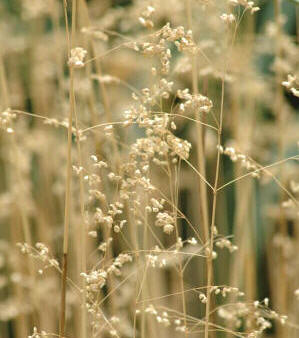 Briza media is best planted in an open situation in full sun,
though it will also thrive in light or dappled shade - preferably
against a dark background to get the best effect of the dainty
flowers.
Briza media is best planted in an open situation in full sun,
though it will also thrive in light or dappled shade - preferably
against a dark background to get the best effect of the dainty
flowers.
It makes and excellent patio pot plant, and will grow well in any
container - either plastic or terra cotta. Visitor will undoubtedly
want to tap the flower stalks to see the flowers or seedheads dancing
about!
Briza is fully hardy - re-appearing year after year, and rarely needs
any more than a bit of a tidy-up after the winter. (Leave the stems on
the plant through the autumn/winter.)
There are no pests or disease to worry about with this grass, and like so many grasses, they are quite happy in dry conditions.
Propagation of Briza media.
All of the Briza group can be propagated by seed sown in spring. The seed can either be sown where the plant is to grow, or better still, sprinkle a few seeds in individual pots and then plant out soon after germination.
Division just as the growth starts in early spring is the quicker method - and sometimes more reliable than sowing seed.
Best Selling Gardening Products
Popular Gardening Sections
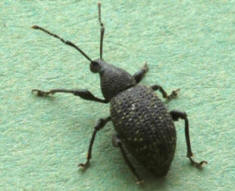
Problems
Identify Weeds in The Garden - How to deal with weeds. Diseases and Pest which harm your garden and plants, learn how to prevent, deter and erradicate your garden problems.
Garden Problems
Pruning
Pruning Guide. Shrubs flower better with correct pruning. Many illustrations and examples of what to do - and when. Includes evergreens, roses, flowering shrubs, spring flowering shrubs and pruning for stem effect. This is our most viewed and comprehensive section,
Pruning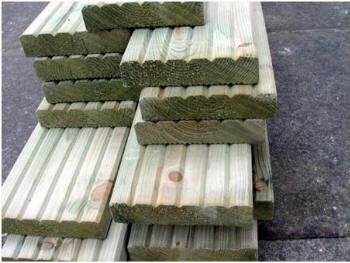
Gardening Businesses
Gardening Businesses listed in the UK counties and USA states. County and State Listings of businesses involved in Garden supplies and services. If you wish to be added to the Directory, please send us your information. Having problems, use the search box
Businesses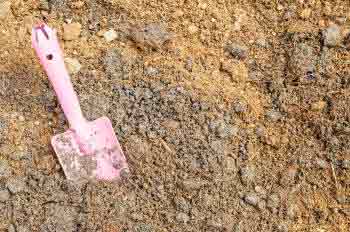
Gardening
In this section you will learn about Gardening Basics, Containers, Landscaping, Propagation and Soil.
Gardening
Gardening Gifts
Gardening Gifts and Reviews, Read Before you Buy
- Gardening Gifts Ideas
- Gifts For Her
- Gifts For Men
- Power Tool Gifts
- Cheap Gifts
- Personalised Gifts
- Wildlife Gifts
- Family Gifts

